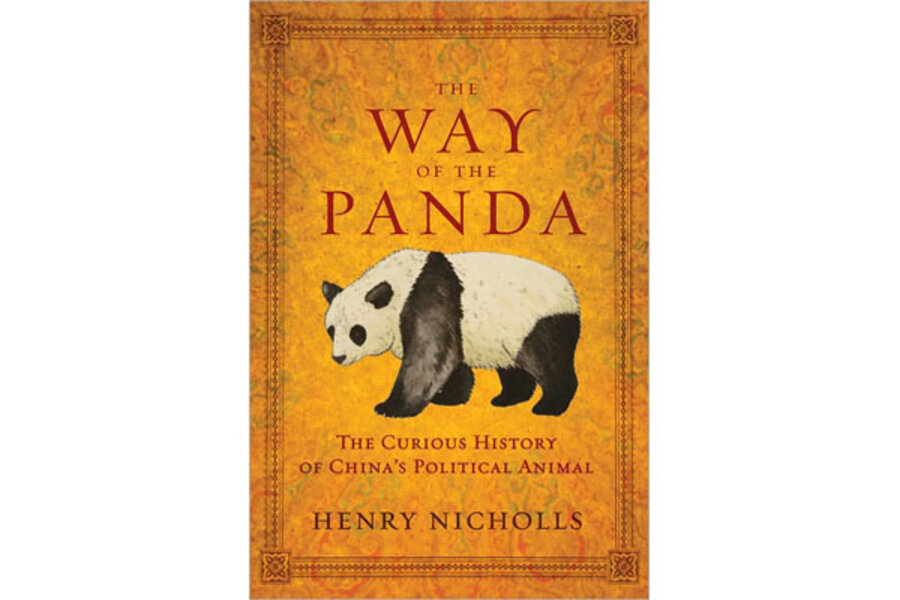The Way of the Panda: The Curious History of China's Political Animal
Loading...
Considering their famous resistance to mating in captivity, it may seem like pandas aren't much into adoring each other. Thankfully, we humans more than make up for their apparent lack of mutual regard: We love pandas to pieces.
People flock to zoos to see pandas up close. They're the emblems of both China and a leading advocacy organization for animals. And pandas are more than just cute and cuddly: they offer perspective about evolution and serve as a tool of international diplomacy.
Our obsessive fascination with pandas might make for a great story, especially if it comes with fresh insight into what they mean to us and what we mean to them (for better or worse). But in the hands of British science journalist Henry Nicholls, their tale never moves past the level of mildly intriguing.
In fact, both pandas and people come across as more dull than darling in Nicholl's new book The Way of the Panda: The Curious History of China's Political Animal. Few of the human characters in this saga leap off the page, not even the intrepid 19th-century Western explorers who discovered pandas in China or the modern world's panda-trading politicians.
Nicholls does succeed at explaining how our obsession with pandas has evolved from a disturbing dead-is-best approach to a kinder sort of appreciation.
More than a century ago, museum collectors thought the best kind of panda was a shot and stuffed one, the better to take home and put on display. Ironically, this panda-unfriendly approach actually helped people to care about them for the first time. "After all, if you don't know what is out there, conservation is kind of meaningless."
As people learned to shoot pandas with cameras instead of rifles, they continued to fascinate scientists who argued over whether they're more closely related to the bear, raccoon, or another species called the lesser panda. The current consensus is that the giant panda is a bear.
Along came a challenge for the ages: Get a bear out of China and keep it alive, a task that required plenty of ingeniousness and intrigue. Then zoos had to figure out what to feed the pandas at urban zoos. (In Britain, the panda named Chi-Chi enjoyed chocolate, a spot of tea, and porridge that sent her right into nappy time. These days, bamboo – surprise! – is the panda food of choice at zoos.)
Now, the biggest challenge is to figure out how to boost the number of pandas in the wild and avoid the risk of extinction, which was quite real just a couple of decades ago. "Conservation of the giant panda in the wild is about much more than these stunning animals or even about the thousands of other endangered species that benefit from its protection," Nicholls writes as he enters full-on drama mode. "The conservation of wild pandas has also become a test of ourselves as a species. "
At the moment, pandas in the wild appear to only number in the hundreds or low thousands. The solution seems simple – just breed them in captivity and then them loose back in China's pandaland. But getting pandas to mate isn't easy, a fact that's delighted headline writers for a couple generations, especially when matchmakers set up pandas across international line.s ("From Russia without Love"). It didn't help matters when a female panda visiting Moscow only appeared to get frisky when humans were around, a problem that even the George Clooney of pandas might have had trouble solving.
Even if pandas get around to breeding behind bars, plopping a zoo-raised panda into a new environment has its risks. For one thing, in the wild, pandas may kill a new arrival, especially if he's a male. And even if you take the panda out of the zoo, you might not be able to take the zoo out of the panda.
"The Way of the Panda" has moments of wit, and it never becomes a truly tedious read. But even though he's fascinated by how the panda turned from "a zoological to a cultural phenomenon," Nicholls is more interested by science than psychology. He never delves deeply into why we like pandas so much more than, say, grizzly bears or koalas. What accounts for their "pure and simple beauty"? Is it their raccoon eyes, their coloring or their seeming gentleness?
Maybe our fascination has its roots in the stuffed animals named after Theodore Roosevelt, an influential conservationist who wanted to make sure his hunter brethren didn't ruin the great outdoors and the animals who live in it. After all, many of us used to cuddle in our cribs with a four-legged wild animal. Let's hope we remember that pandas aren't teddy bears and deserve more than a fond memory or two.
Randy Dotinga is a Monitor contributor.






